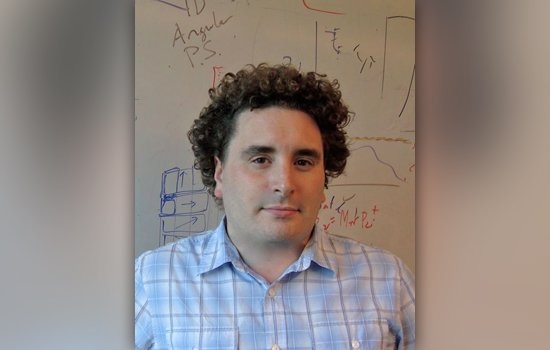Aug 11 2016
 Michael Zemcov (Credit: Rochester Institute of Technology)
Michael Zemcov (Credit: Rochester Institute of Technology)
A team of undergraduates from Rochester Institute of Technology are developing a “compass” to be used in rockets with the help of a new kind of detector technology. The instrument will fly on a NASA technology demonstration mission later this year.
The graduate team is developing, constructing, and integrating a camera and telescope that will help to orient the rocket payload based on the images of stars.
RIT’s Cryogenic Star Tracking Attitude Regulation System is financially aided by a $200,000 grant from NASA’s Undergraduate Student Instrument Project Flight Research Opportunity program. The aim of this NASA program is to provide undergraduates the required experience in flying and developing experiments relevant to NASA’s mission.
Michael Zemcov, professor from RIT, proposed that the experiment conducted to test detectors made of CMOS or metal-oxide semiconductor is a promising new material that is capable of operating at liquid nitrogen temperatures, minus 320 degrees Fahrenheit.
These cryogenic temperatures have the ability to significantly lower dark current in the sensor and also increase instrument sensitivity. On the contrary, the conventional technology used in astronomical imaging and in consumer electronics - CCDs or charge-coupled detectors - cannot be operated at cold temperatures.
Zemcov, assistant professor of physics at RIT, suggests that RIT’s prototype displays a step toward a fully cryogenic optical detector that in the future will have the ability to improve the sensitivity of NASA’s deep-space cameras. The star tracker will be launched in December, 2016, in a technology demonstration payload on a suborbital sounding rocket from NASA’s Wallop Flight Facility on Wallops Island, Va., along with various other experiments conducted by NASA laboratories and other Universities.
Sounding rockets are related to military ordnance, similar to surface-to-air missiles, which fly approximately to an altitude of 200 miles, and are an inexpensive way to conduct science experiments in space.
After the primary flight is successful, a second instrument build by RIT will fly on a NASA rocket experiment to evaluate the light from faint and far off galaxies. The CIBER-2 or the Cosmic Infrared Background Experiment 2 is headed by the California Institute of Technology. Zemcov is a co-investigator on CIBER-2 and also a member of RIT’s Center for Detectors and the Future Photon Initiative.
We needed to build a star tracker for this science payload. The problem is that most of the detectors we have don’t work at the cold temperatures we require.
Michael Zemcov, Professor, RIT
The student team from RIT brings strengths from various disciplines to the project.
Every team member has been assigned a job: Kevin Kruse, the electrical engineer and the team leader is a fifth-year BS/MS electrical engineering major from Port Jefferson Station, N.Y; Chris Pape, pursuing his third-year in the BS/MS program in mechanical engineering technology/mechanical and manufacturing systems integration from Douglassville, Pa., is the mechanical engineer; Benjamin Bonder, is the computer engineer and is a fifth-year BS/MS electrical engineering major from Geneva, N.Y; Poppy Immel, the computer scientist is a fifth-year BS/MS dual-degree major in computational mathematics and computer science from Castleton, Vt; Matthew Delfavero, a third-year physics major from Annapolis, Md., is the physicist; and Hyun Won, a fourth-year international business student born in South Korea and who grew up in Ann Arbor, Mich., is the project manager. Most of these students are treating this project as co-op experience.
“The aim is to control this sensor and make it work at cold temperatures,” Kruse said. “Then we’ll launch it into space to take pictures. A future mission would involve us guiding the rocket using the images we take.”
The team’s mentors include Zemcov; Dorian Patru, professor of electrical engineering; and Chi Nguyen, a Ph.D. student from Vietnam in the astrophysical sciences and technology graduate program.
CSTARS will verify a new instrument design, so I’m interested in seeing how well the implemented instrument can meet our expectations. As a graduate student, this project is an excellent opportunity for me to gain mentoring experience and experience working with NASA.
Chi Nguyen, Ph.D. Student